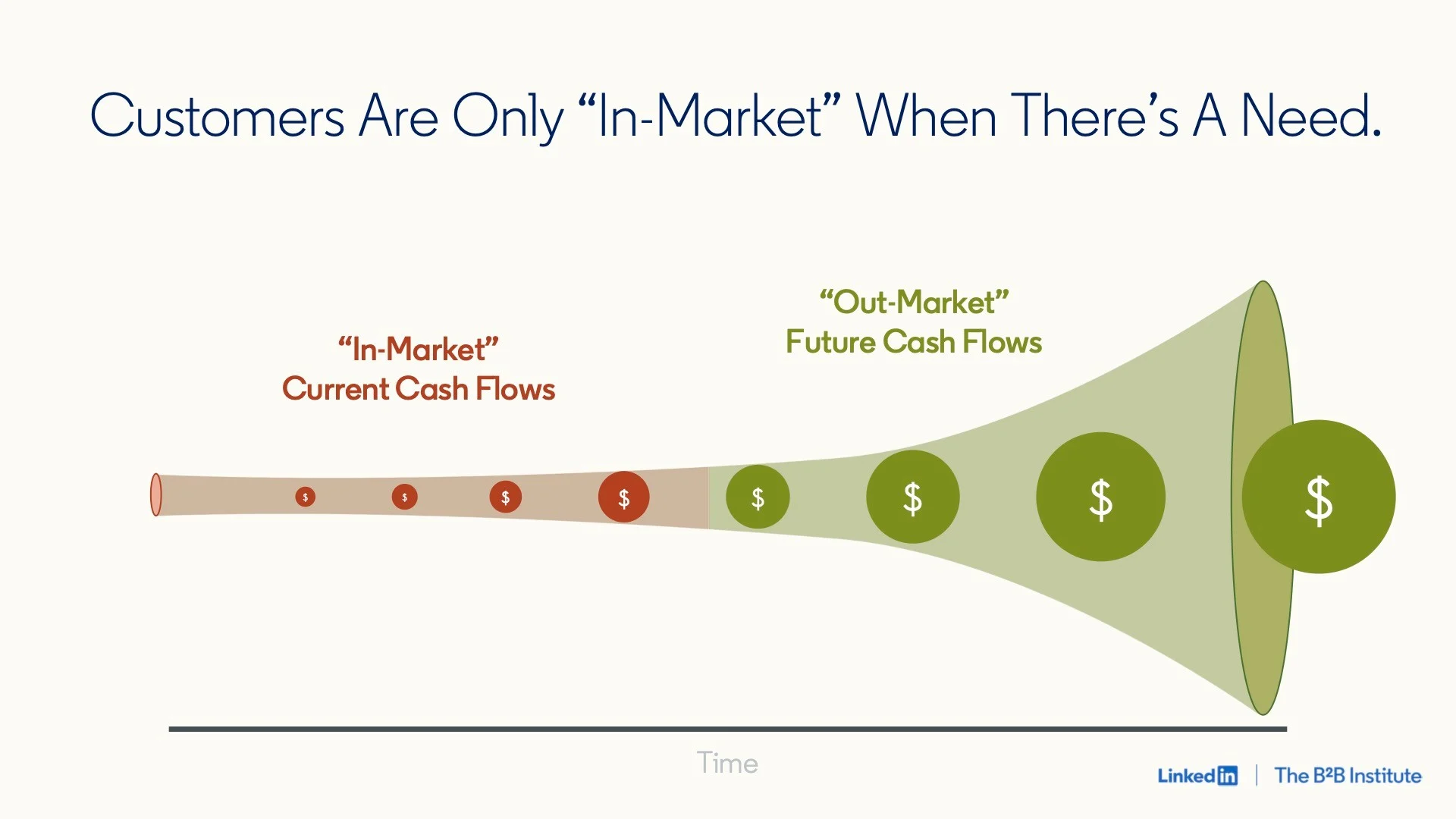As we push along into Q3 and look ahead to Q4, you're either hustling your ass off to reach your end-of-year goals or stressing about how you're going to reach your end-of-year goals.
Well, stop stressing. Stop running yourself ragged too. Instead, learn to leverage the power of buying triggers to grow smarter in Q4.
The New Rule Of Sales & Marketing: The 95-5 Rule
According to the 95-5 Rule outlined in "How B2B Brands Grow", 95% of your potential customers are not ready to buy. You can spend chunks of time and money getting in front of them, but they're not going to take action until they're ready and there's a need.
However, it is possible to reach the other 5% without wasting a bunch of money running ads on Facebook or Google.
How? By leveraging buying triggers.
What are buying triggers?
Buying triggers are simply events, changes, or disruptions that present an opportunity for businesses to serve their customers.
According to Craig Elias, author of Shift!: Harness the Trigger Events That Turn Prospects into Customers,"markets who acted on the specific events that trigger buyers to enter the buying journey reported an 80% savings in direct marketing costs."
Whoa! 🤯
How do you figure out and leverage buying triggers?
To determine your customer’s buying trigger, I like to use elements from the StoryBrand framework:
- their want or desired outcome
- the problem/constraint + how it’s disrupting their life
- the stakes or what’s at risk of being lost if the problem isn’t resolved
Try this formula when thinking about buying triggers:
When <problem/constraint> arises, my customer wants to <avoid the stakes/failure>, so they can <reach their want or desired outcome>.
How to leverage buying triggers to grow smarter
- Identify buying triggers by talking to current or past customers what problems they were trying to solve when they reached out. What stakes were they avoiding? What was the desired outcome? How are things better after working with you?
- Select the most common responses. Then build content around those responses. This is where content marketing is extremely helpful. Use it to build trust with people who are just like your customers but don’t know you yet.
- Deliver that content wherever your ideal audience is most likely to be, whether in real life or online. In other words, don’t invest time or energy in TikTok if your audience is on LinkedIn.
- Plant seeds of association between the buying trigger and your brand by consistently reaching out to folks who might potentially experience a buying trigger in the future.
- Reduce the friction between the buying trigger and customer action. Don’t make it hard for people to give you money. Make your primary CTAs easy to find and easy to click. Contact forms should be easy to fill out. Calendar booking forms should automatically send invites and reminders. Whatever action you want your customer to take, clearly explain what you want them to do and what's to be expected. Lay it out in 3 or 4 easy steps.

About Ali J. Taylor
Ali J. Taylor is the CEO/Creative Director at BelMarketing Design Studio. He helps professional service brands use the power of storytelling to take their messaging, branding, and marketing from forgettable to captivating.

